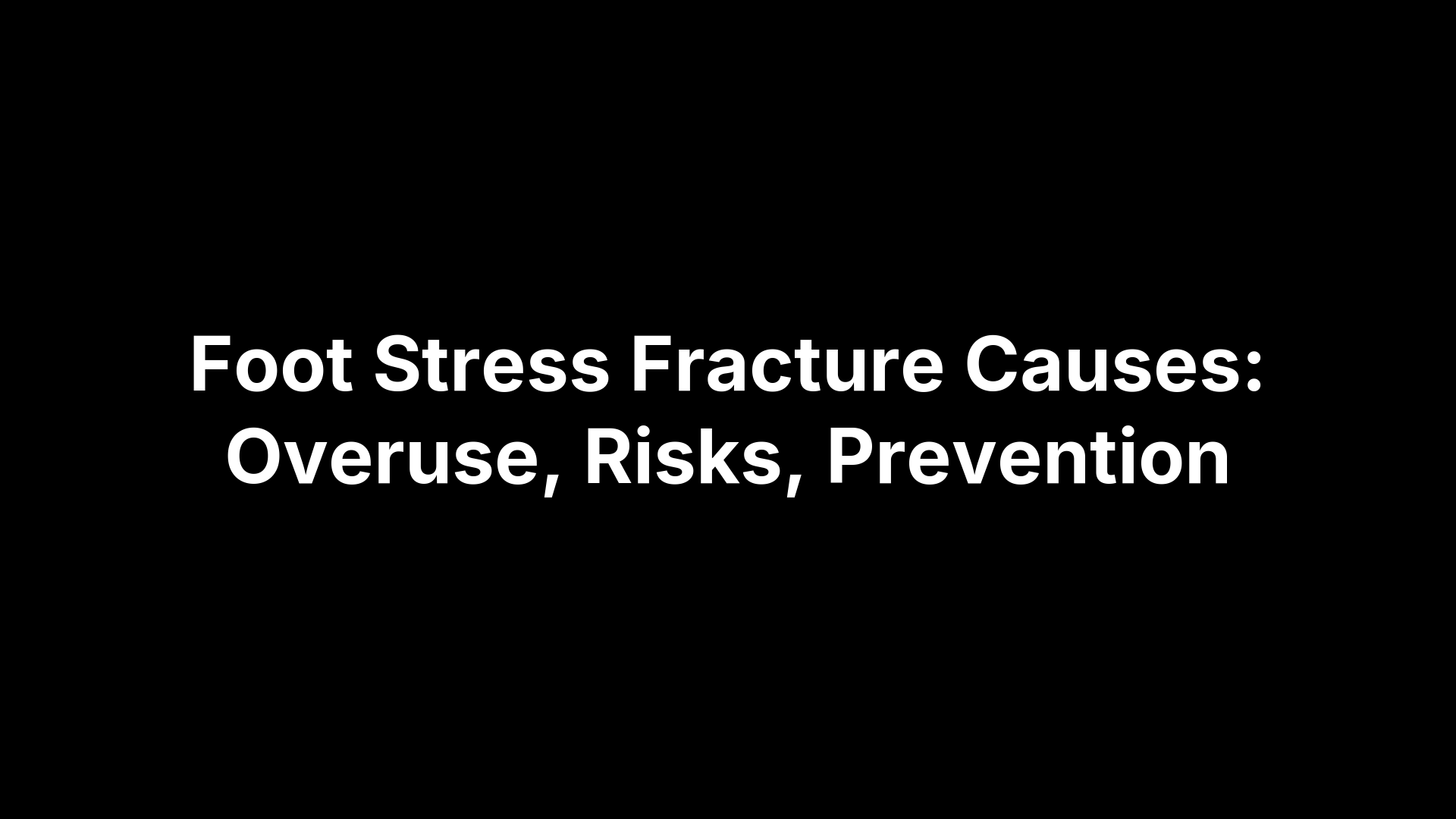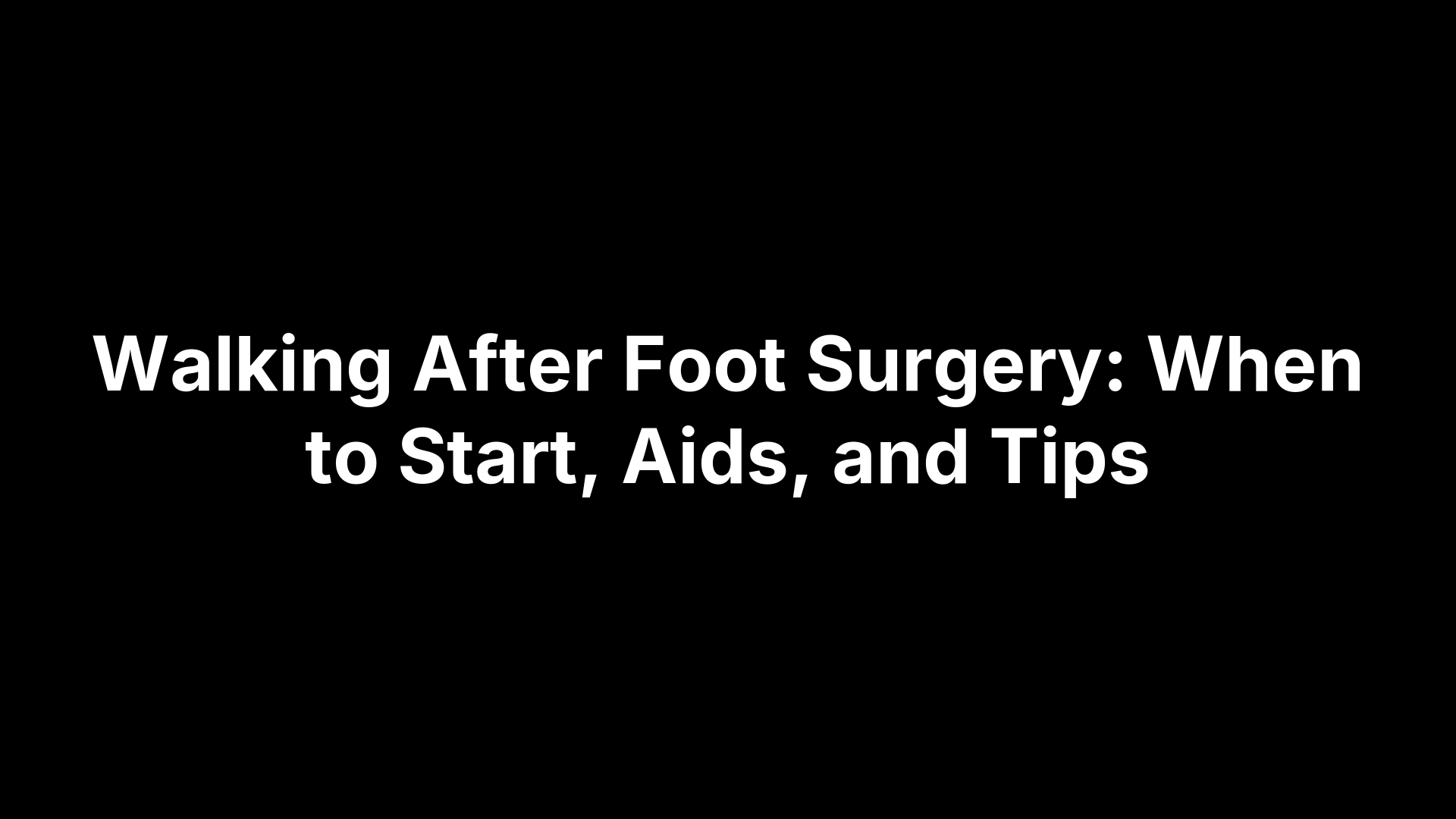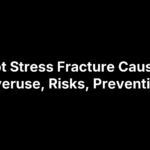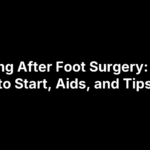The earliest signs of a foot stress fracture are pinpoint pain that flares with activity and eases when you rest, subtle swelling on the top or side of the foot, and tenderness when you press the sore spot. Catching these micro-cracks early often means just a few weeks in a walking boot instead of months in a cast—or surgery.
Stress fractures are tiny hairline breaks caused by repeated load, not a single twist or fall. Because your feet absorb every stride and jump, they’re the bones most likely to reach their breaking point—especially when training ramps up too fast or shoes are worn out. This article shows you how to spot stress fracture foot symptoms, which scans confirm the problem when an x-ray looks normal, and the treatment steps that shield the crack while it heals. You’ll also get a concise rehab roadmap and tactics to avoid a comeback.
What Exactly Is a Foot Stress Fracture?
Think of a stress fracture as your foot’s way of waving a white flag. Instead of one dramatic snap, the bone develops microscopic cracks from the day-in, day-out pounding of walking, running, or jumping. Each stride adds a little more damage until pain forces you to pay attention.
How Stress Fractures Differ from Complete Fractures
- Micro-cracks stay lined up; the bone is still stable.
- Pain starts as a dull ache and worsens with mileage, whereas a full break is instant and intense.
- Most stress fractures heal in 6–8 weeks with protection, while displaced breaks can need surgery and months of rehab.
Bones Most at Risk in the Foot
2nd and 3rd metatarsals bear the brunt of forefoot push-off. Other frequent sites are the navicular (midfoot keystone), calcaneus (heel), cuboid, and tiny sesamoid bones under the big toe.
The Biomechanics Behind Repetitive Stress
Hard surfaces, worn shoes, and muscle fatigue shift extra load to bone. Without enough rest, cumulative forces exceed the bone’s repair rate—creating the classic stress fracture foot symptoms you’re trying to avoid.
Early Warning Signs You Shouldn’t Ignore
Early stress-fracture clues are subtle but consistent. Catch them now, and you’re looking at a boot—ignore them, and you risk a full break. Start with this 30-second self-check:
- Activity-triggered pinpoint pain
- Small, localized swelling/heat
- Quick relief with rest
- New limp or weaker push-off
Localized, Activity-Related Pain
A stress fracture usually starts as a dull throb at a precise spot—often a metatarsal head. The ache spikes when you run, hop, or even stand on tiptoe.
Swelling, Warmth, or Redness at a Specific Spot
Because the bone and nearby tissues flare, you may notice a puff of swelling or warmth the size of a coin; tight shoes often give the first hint.
Pain That Improves With Rest but Returns Quickly
Classic pattern: sit down for ten minutes and it calms, but the moment you resume walking, the pain snaps back like elastic.
Subtle Functional Changes
Over days you might unconsciously shift weight to the outer edge, limp after workouts, or see race times tank—early performance drops can precede real limping.
Advanced Symptoms and When To Seek Immediate Care
When early stress fracture foot symptoms are brushed off, the micro-crack keeps widening. The result is pain that intrudes on daily life, visible swelling, and sudden loss of function. These red flags demand same-day medical help.
Persistent Night or Resting Pain
Pain that wakes you up or throbs while you sit signals the crack is growing or failing to heal—a warning for possible non-union or complete break.
Significant Swelling, Bruising, or Heat
Rapidly increasing puffiness, dark bruising, or skin that feels hot compared to the other foot suggests severe inflammation or even infection; don’t wait to see if it settles.
Inability to Bear Weight or “Can You Walk on a Stress Fracture?”
Some people limp through mild cracks, but if every step feels like a stab or hopping on the injured foot is impossible, head for urgent imaging before the bone snaps.
Common Risk Factors and Root Causes
Stress-fracture cracks rarely strike out of the blue. They usually appear when several risk factors gang up: a bone that’s a little weaker than it should be plus training or work demands that overload it day after day. Spotting which factors apply to you is the first step toward keeping stress fracture foot symptoms from making a repeat appearance.
| Internal (body-driven) | External (environment-driven) |
|---|---|
| Low bone density / osteopenia | Sudden mileage jumps |
| Amenorrhea or low estrogen | Hard, unforgiving surfaces |
| Previous stress fracture | Worn-out or improper shoes |
| Vitamin D & calcium deficit | Long shifts on concrete |
Training Errors and High-Impact Activity
A rapid 25 % bump in weekly running distance or back-to-back HIIT sessions gives bone no time to remodel. Hard courts, treadmills, and downhill trails multiply impact forces with each stride.
Bone Health and Hormonal Factors
Thin, under-mineralized bones crack sooner. Women with irregular periods or athletes with Relative Energy Deficiency in Sport (RED-S) lose protective estrogen, slowing bone repair.
Foot Structure and Mechanics
High arches act like rigid levers, while flat feet over-pronate—both shift stress to the 2nd and 3rd metatarsals. Even a slight leg-length difference can concentrate load on one side.
Occupational and Lifestyle Contributors
Military recruits, retail staff, and postal workers log thousands of steps on concrete. Add smoking or low-calorie dieting, and bone recovery falls behind daily wear and tear.
How Doctors Diagnose a Foot Stress Fracture
Because early stress fracture foot symptoms can mimic simple over-use soreness, an accurate diagnosis relies on a step-by-step work-up. Your podiatrist starts with a hands-on exam, then orders the right scan at the right time, and, finally, rules out look-alike conditions before prescribing a treatment plan.
Clinical Examination Techniques
First comes a detailed history—recent mileage spikes, shoe age, menstrual changes, diet. Next, the doctor pinpoints tenderness you can “trace with a fingertip.” Common in-office tests include:
- Palpation: direct pressure along each metatarsal until pain localizes.
- Tuning-fork or stethoscope test: vibration over the bone reproduces pain when a crack is present.
- Single-leg hop or heel raise: inability to perform without wincing suggests cortical compromise.
Combined, these simple maneuvers predict a stress fracture with reasonable accuracy even before imaging.
Imaging Options and Their Limitations
Standard X-rays are the first stop, but tiny cracks often stay hidden for 10–21 days while new bone forms. If pain persists and X-rays are clean, your doctor will escalate to:
- MRI (gold standard): shows marrow edema and the exact crack line; no radiation.
- CT scan: great for navicular or sesamoid detail when MRI isn’t possible.
- Bone scan or ultrasound: older or adjunct choices when other modalities are unavailable.
Ruling Out Other Causes of Foot Pain
Sharp top-of-foot pain isn’t always a fracture. Your provider compares findings to conditions like extensor tendonitis, Morton’s neuroma, plantar fasciitis, and midfoot arthritis. Correctly identifying the source prevents wasted time in a boot and speeds you toward the right fix.
Treatment Options for Fast, Safe Healing
Managing a stress fracture in the foot is a step-by-step process: calm the bone down, protect it while it knits, and shore up the weak links that caused the crack in the first place. Follow the sequence below and you’ll shorten downtime and slash the odds of repeat stress fracture foot symptoms.
Immediate First Aid: RICE and Activity Modification
- Rest: Stop running, jumping, or long walks the moment pinpoint pain appears.
- Ice: 15 minutes on, 45 minutes off, three to four times daily.
- Compression & Elevation: Light wrap or sleeve plus a pillow under the ankle limits swelling.
Swap impact sports for biking, pool running, or rowing—anything that keeps fitness up without pounding the foot.
Immobilization Devices: Do You Need a Boot?
Most metatarsal fractures heal nicely in a removable walking boot worn 24/7 for 4–6 weeks. Midfoot (navicular) or sesamoid cracks may require a rigid cast or even a short leg non-weight-bearing cast. Key rule: no barefoot time, even indoors.
Weight-Bearing Guidelines and Assistive Devices
Your provider will grade weight bearing:
- Non-weight-bearing with crutches/knee scooter.
- Partial weight-bearing (boot + crutches).
- Full weight-bearing in boot.
Progress only when you can hop in place pain-free.
Pain Management Without Hindering Bone Healing
Acetaminophen is first-line. If swelling is intense, short-term NSAIDs are okay, but chronic use can slow bone remodeling. Ice, elevation, and contrast baths add relief without pharmacologic downside.
Addressing Underlying Causes
- Foot mechanics: custom orthotics, shoe upgrade, gait retraining.
- Bone health: vitamin D ≥ 30 ng/mL, 1 000–1 200 mg calcium daily, adequate protein.
- Training errors: follow the 10 % weekly mileage rule, add rest days.
Correct these factors now, and the fracture is far less likely to return.
Rehabilitation and Safe Return to Activity
The day your boot comes off is exciting—and a little intimidating. Bone may be knit, but muscles are weak, joints are stiff, and balance is off. A structured rehab plan bridges the gap from “healed on paper” to pounding pavement again without the old stress fracture foot symptoms sneaking back.
Typical Healing Timelines by Bone
| Bone | Average Return-to-Sport Window |
|---|---|
| 2nd–3rd Metatarsals | 6–8 weeks |
| Calcaneus (heel) | 8–12 weeks |
| Navicular & Sesamoids | 8–12+ weeks |
Smoking, poor nutrition, or waiting weeks to seek care can tack extra time onto every line in the chart.
Gradual Load-Bearing & Physical Therapy Progression
- Phase 1 – Mobility & Circulation: Ankle alphabets, toe spreads, pool walking.
- Phase 2 – Controlled Load: 25 % body-weight in boot, resistance-band eversion/inversion, single-leg balance on foam.
- Phase 3 – Return to Impact: Walk-run intervals on soft track, then sport-specific drills. Advance only when you can hop 30 times pain-free.
Strengthening and Flexibility Must-Do’s
- 3 × 15 calf raises off a step
- Towel curls and marble pickups for intrinsic foot strength
- Hip abductor and core planks to steady landing mechanics
Finish each session with 30-second stretches for calves, plantar fascia, and hamstrings.
Prevention Strategies for the Future
- Follow the 10 % rule for mileage bumps.
- Rotate high- and low-impact days; swap in cycling or rowing.
- Replace running shoes every 300–500 miles and add orthotics if your gait demands it.
- Keep vitamin D, calcium, and protein on point—bone is living tissue that needs fuel.
Complications of Ignoring a Stress Fracture
Let a small crack simmer long enough and it can snowball into problems that sideline you far longer than the original injury. The stakes jump from weeks in a boot to months of rehab—or even permanent limitations.
Complete Fracture and Surgical Fixation
Unchecked micro-cracks can split clear through the bone, shift out of alignment, and demand hardware such as screws or plates. Surgery increases cost, infection risk, and recovery time dramatically.
Chronic Non-Union and Persistent Pain
When movement at the fracture site blocks healing, bone ends stay separate (non-union). This causes deep, nagging pain that flares with every step and may still require surgery years later.
Secondary Issues: Arthritis, Gait Changes, New Injuries
Prolonged limping alters joint mechanics, speeding wear in the midfoot and ankle. Compensatory patterns often spark knee, hip, or back trouble, creating a domino effect of overuse injuries.
Frequently Asked Questions About Foot Stress Fractures
What Is the Fastest Way to Heal a Stress Fracture?
Strict rest, round-the-clock boot wear, and solid bone nutrition (calcium, vitamin D, protein) let the crack knit fastest. Any activity that sparks pain resets the clock.
Can I Keep Walking If the Pain Isn’t Bad?
You technically can, but every extra step risks turning a hairline crack into a full break. Pain is a warning light—ignore it and expect longer healing.
How Long Until I Can Run Again?
Most runners start a walk-run progression around 6–12 weeks, depending on bone involved and strictness with treatment. Rush the timeline and you restart the injury.
Do Stress Fractures Show Up on X-Rays Right Away?
Early X-rays miss many stress fractures. If classic stress fracture foot symptoms linger after a “normal” film, an MRI or CT can spot the damage within days.
Key Takeaways & Next Steps
- Catch the whispers, not the scream. Pin-point pain that flares with activity, mild swelling, and tenderness to the touch are the signature stress fracture foot symptoms to act on right away.
- Hit pause on impact. Swap running and jumping for swimming or cycling the moment those signs appear; every extra mile widens the crack.
- Confirm, don’t guess. A podiatric exam plus the right imaging (often MRI) separates stress fractures from tendonitis or plantar fasciitis and prevents months of trial-and-error treatment.
- Protect, then progress. Consistent boot use, guided weight-bearing, and bone-friendly nutrition speed healing; structured rehab restores strength, balance, and confidence.
- Fix the root causes. Smart training ramps, fresh shoes, foot-specific orthotics, and steady calcium + vitamin D levels keep the injury from circling back.
Still wondering if your foot pain is a micro-crack or something else? Residents of Central Virginia can book a same-day evaluation with the team at Achilles Foot and Ankle Center for personalized answers—and a faster path back on your feet.






